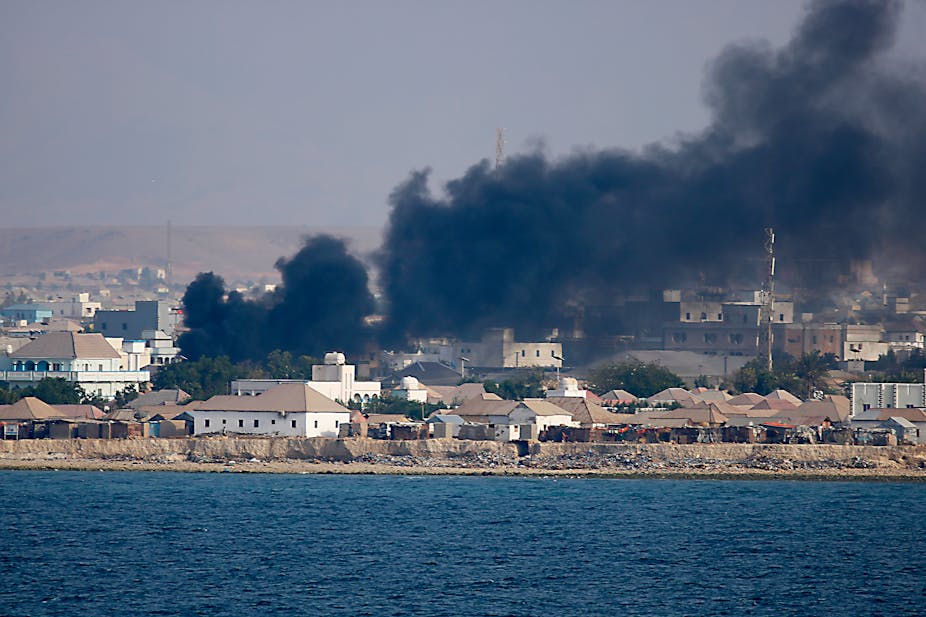Fragile and least developed countries have had their development assistance cut drastically, according to the Organisation for Economic Co-operation and Development. For instance, net official development assistance to sub-Saharan African countries has shrunk by 7.8% compared to 2021. And development aid for peace and conflict prevention has declined to its lowest in 15 years.
These cuts will hit fragile countries hard. Fragile countries make up 24% of the world’s population and account for 73% of the world’s extreme poor. The list includes Mali, Lebanon, Somalia, Syria and Iraq.
Budget cuts are already having far-reaching effects and fuelling humanitarian crises. The World Food Programme estimates that “every one percent cut in food assistance risks pushing more than 400,000 people towards the brink of starvation”.
UN secretary-general António Guterres has warned that aid cuts threaten to undo gains in development. Keeping in mind that poverty has increased in conflict-affected countries despite a global downward trend, we anticipate that such a reversal could contribute to global instability.
Violent conflict has already been on the rise among countries that rely heavily on foreign financial assistance. Decades of research (including ours) show that marginalised populations are most vulnerable to be (re-)mobilised into fighting and are typically also most affected by armed conflict (even after violence ends).
It is true that political and societal context matters and needs to be taken into account. But the reduction in aid allocation to least developed countries and especially those recovering from violent conflict could put fragile countries on a trajectory of (renewed) political instability and underdevelopment. Already vulnerable populations will have to yet again carry the brunt of new cycles of violence and impoverishment.
We have been researching links between development and violent conflict for decades and close to a decade, respectively. Our latest research project is on the institutional legacies of violent conflict. It shows how and why violent conflicts persist, how and why their legacies endure, and what can be done to reduce the risk and impact of violence. We recommend that development aid needs to correspond more closely with mounting peacebuilding and humanitarian needs in fragile settings.
The impact
Not all development aid is effective in bringing stability or building peace. Nevertheless, based on our analysis, development aid plays a crucial role in six key areas.
Firstly, development aid is effective when linked to the delivery of public services. These in turn strengthen the social contract and mitigate the risk of violence.
Secondly, financial assistance can help governments absorb the effects of economic shocks. Economies across the global south are already stifled by the aftermath of the COVID pandemic, climate risks and the economic consequences of the war in Ukraine. Fragile countries often rely on assistance to meet some of their population’s most basic needs such as food or water.
Without additional financial assistance many governments will not be able to manage their way through these shocks. That may embolden violent non-state actors to gain power.
Two examples stand out. In west Africa violent non-state actors operating in the Sahel region are set to expand their influence into new areas considered stable thus far, such as the north of Côte d’Ivoire.
Similarly, the current Israel-Palestine conflict risks spreading instability into neighbouring countries amid longstanding tensions and economic fragility.
Thirdly, cuts in development aid may reduce the limited leverage western countries still have to prevent the rise of opportunistic armed groups such as the Wagner Group, the spread of extremism and the risk of civil conflicts.
The Sahel region is also emblematic for this dynamic. Mali and Burkina Faso have seen the deadliest year on record as their military transitional governments struggle to contain jihadist insurgencies. Since the recent military coup in Niger, which prompted withdrawal of both aid and international troops, the country has also experienced a surge in militant violence.
Fourth, worsening economic and security conditions in fragile and least developed countries are already reverberating into Europe. There have been spikes in irregular border crossings into European Union countries in 2023.
Fifth, rising discrepancy in development aid allocation could amplify mistrust in international institutions and western actors. That could contribute to worsening security situations. Some governments in fragile countries are already reluctant to continue to engage with the UN and especially western actors to combat violent non-state actors.
An example of this is the Democratic Republic of Congo’s recent request to the UN for an “accelerated” withdrawal of troops. It comes 24 years after the start of Monusco, the UN’s peacekeeping mission in DRC, one of the largest in the world. Violence may increase in the absence of such international intervention, as has happened since the withdrawal of Minusma, the UN mission that was in Mali for ten years.
Sixth, the reduction in aid allocation to least developed countries and especially those recovering from violent conflict could result in continued political instability and underdevelopment.
Next steps
Development funding should be allocated in a way that corresponds more closely with peacebuilding and humanitarian needs. This is also made clear in the UN’s New Agenda for Peace. It calls for action now to
reinforce the cooperative frameworks that are necessary to move us from the path to destruction to the path to prosperity … based on a reforged commitment to multilateral solutions, grounded on trust, solidarity and universality.
Correcting course in aid allocation could address some of the growing mistrust among developing countries and support prospects for peace.

